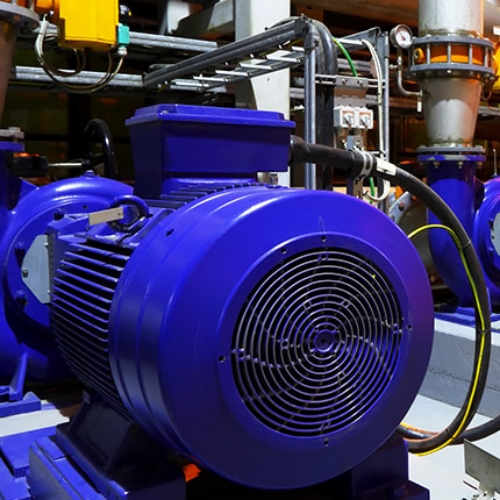It is important to study the types of blower before select the suitable to use. Here we listed 2 types of blowers and required technical information:
Centrifugal Blower.
Centrifugal blowers use high speed impellers or blades to impart velocity to air or other gases. They can be single or multi-stage units. Like fans, centrifugal blowers offer a number of impeller orientations, including backward curved, forward curved, and radial. Blowers can be multi- or variable speed units. They are usually driven by electric motors, often through a belt but some centrifugal blowers are directly coupled to drive motors. Fan speed can be changed to vary flow rates by resizing sheaves, using variable speed drives.
Most standard centrifugal type blowers impart energy to incoming air by simply hurling it outward from a central point. And operate on a regenerative principle that provides much higher pressure and vacuum. In these devices, air enters through an inlet port and is accelerated by the impeller. Through centrifugal force, this air is thrown against the walls of casing where it is reflected back to the base of the impeller blades. The process is repeated many times during each revolution of impeller and constantly compounds the energy and acceleration imparted to incoming air. The overall effect is not unlike that obtained in multi-stage devices. However , in the case of the centrifugal blower, the increased output is due to many regenerative cycles that take place during each revolution of the impeller . To meet specific requirements, many combinations of these blowers are possible.
Positive Displacement Blower.
Positive Displacement blowers are similar in principle to positive displacement pumps in that they use mechanical means to squeeze fluid and thereby increase pressure and/or velocity. Centrifugal designs, on the other hand, impart velocity and pressure to media by flinging them outward with impellers. Among positive displacement blowers, the Roots, or rotary lobe, type is common, which uses two counter-rotating lobed rotors to move fluid through the blower. A cutaway blower shows one of the two rotors. A pair of symmetrical rotors rotates in opposite directions, by means of the rotors rotation. Air is captured from the inlet orifice. And in the meantime, the other parts of the rotor compress air and expel it through the outlet orifice. Totally 6 motions are taken place within the air chamber in one full revolution of rotors. Positive displacement blowers are often driven by electric motors .
Technical Information To Select A Blower.
To select a blower , the required data includes the flow rate (m3/min), static pressure , and air density.
Airflow is rated in cubic meter of air per minute (CMM) or in feet calculation, please use converter to CMM.
Example: If you are conveying material, you must have enough Air Volume (CMM) for the duct, pipe, hose size and the material will maintain the required velocity to carrying it completely through the system. Selecting the suitable air flow for the system can be very technically. It cannot be too low or too high that cause the clogging or blow out in the system. The right air flow can take the material conveying velocity into consideration for the material to move to another location that required.
Static Pressure is the resistance to air flow caused by air moving through a pipe, duct, hose, filter or air control systems. Static pressure is rated in Bar, mbar, PSI, mmAq or others. Please use converter.
The Total Static Pressure for the system must include static pressure of the total air flow moving through the entire system. Please calculate the pressure drop through all of the of ductwork on inlet and outlet of the blower , include filter , controller and others component that restrict air flow.
When a large amount of static pressure is on the inlet of a blower, it requires additional suction to move the air , That is because it is easier to blow air than suck air . This is called Rarefication.
Density changes resulting from temperature and/or barometric pressure variations, such as higher altitudes, must be corrected to standard conditions before selecting a fan or blower based on standard performance data.
Others factors – temperature of air ,altitude , mmbient temperature and safety conditions.
The temperature of the air going through the blower will affect the performance of the fan or blower.
The altitude the blower will be operating at will also affect the performance of the blower. The altitude should be given in feet above sea level.
The ambient temperature is the temperature of the air outside the blower. This can affect the operation of the motor and the fan bearings and/or belts for any belt driven fans blowers.
When a blower or fan will be moving air at temperatures substantially above 32 C, the safe operating speed of the blower impeller must be consideration .
Most metals characteristically weaker at higher temperatures. There are maximum operating temperature will listed in catalog for various blowers.
For more details ,please do not hesitate to contact us or follow our Facebook Page
